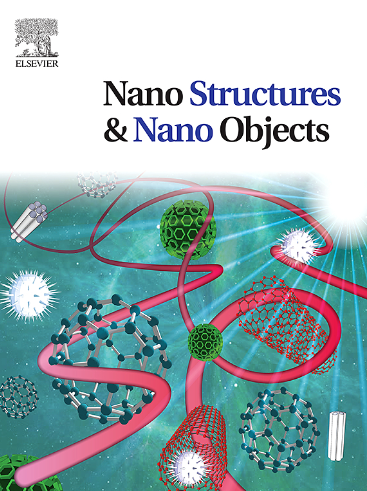Evaluation of self-assembling properties of paclitaxel-biotin conjugates
IF 5.45
Q1 Physics and Astronomy
引用次数: 0
Abstract
Among many approaches to the creation of targeted chemotherapeutic agents, one relies on the attachment of biotin to the drug molecule. The prospect of such hybrid compounds has been demonstrated by the example of biotinylated taxane derivatives, in particular paclitaxel, which is widely used in clinical practice. However, the ability of paclitaxel-biotin conjugates to form self-assembled nanocomposites stable in aqueous media has not been revealed yet. Such a promising drug formulation would avoid the use of solubilizers often applied in conventional paclitaxel dosage forms and lead to side effects. In the present study the synthesis of paclitaxel-biotin conjugates differing in spacer chain length and hydrophobicity is described. It has been established that direct biotinylation of paclitaxel allows the resulting compound to form spherical nanoparticles. At the same time, the introduction of a hydrophilic spacer into the conjugate did not favor its ability to self-organize into such structures. It was demonstrated that the direct biotin-paclitaxel conjugate assembles into narrow-dispersed nanoparticles, which also have an optimal size (120–130 nm) for such drug delivery systems. Moreover, in the presence of non-toxic polyvinyl alcohol the nanoparticles were stable during storage. Taking into account also the ease of preparation, all these results make paclitaxel-biotin conjugate nanoparticles promising dosage forms based on paclitaxel derivatives.
评估紫杉醇生物素共轭物的自组装特性
在制造靶向化疗药物的众多方法中,有一种方法是将生物素附着在药物分子上。生物素化的类固醇衍生物,尤其是广泛应用于临床的紫杉醇,已经证明了这种混合化合物的前景。然而,紫杉醇-生物素共轭物形成在水介质中稳定的自组装纳米复合材料的能力尚未揭示。这种前景广阔的药物制剂可以避免在传统紫杉醇剂型中使用增溶剂而导致的副作用。本研究介绍了不同间隔链长度和疏水性的紫杉醇-生物素共轭物的合成。研究证实,紫杉醇直接生物素化后可形成球形纳米颗粒。同时,在共轭物中引入亲水性间隔链不利于其自组织成此类结构。实验证明,生物素-紫杉醇直接共轭物可组装成窄分散纳米颗粒,其尺寸(120-130 nm)也是此类给药系统的最佳尺寸。此外,在无毒聚乙烯醇的作用下,纳米颗粒在储存期间也很稳定。考虑到制备的简便性,所有这些结果都使紫杉醇-生物素共轭纳米颗粒成为基于紫杉醇衍生物的有前途的剂型。
本文章由计算机程序翻译,如有差异,请以英文原文为准。
求助全文
约1分钟内获得全文
求助全文
来源期刊

Nano-Structures & Nano-Objects
Physics and Astronomy-Condensed Matter Physics
CiteScore
9.20
自引率
0.00%
发文量
60
审稿时长
22 days
期刊介绍:
Nano-Structures & Nano-Objects is a new journal devoted to all aspects of the synthesis and the properties of this new flourishing domain. The journal is devoted to novel architectures at the nano-level with an emphasis on new synthesis and characterization methods. The journal is focused on the objects rather than on their applications. However, the research for new applications of original nano-structures & nano-objects in various fields such as nano-electronics, energy conversion, catalysis, drug delivery and nano-medicine is also welcome. The scope of Nano-Structures & Nano-Objects involves: -Metal and alloy nanoparticles with complex nanostructures such as shape control, core-shell and dumbells -Oxide nanoparticles and nanostructures, with complex oxide/metal, oxide/surface and oxide /organic interfaces -Inorganic semi-conducting nanoparticles (quantum dots) with an emphasis on new phases, structures, shapes and complexity -Nanostructures involving molecular inorganic species such as nanoparticles of coordination compounds, molecular magnets, spin transition nanoparticles etc. or organic nano-objects, in particular for molecular electronics -Nanostructured materials such as nano-MOFs and nano-zeolites -Hetero-junctions between molecules and nano-objects, between different nano-objects & nanostructures or between nano-objects & nanostructures and surfaces -Methods of characterization specific of the nano size or adapted for the nano size such as X-ray and neutron scattering, light scattering, NMR, Raman, Plasmonics, near field microscopies, various TEM and SEM techniques, magnetic studies, etc .
 求助内容:
求助内容: 应助结果提醒方式:
应助结果提醒方式:


